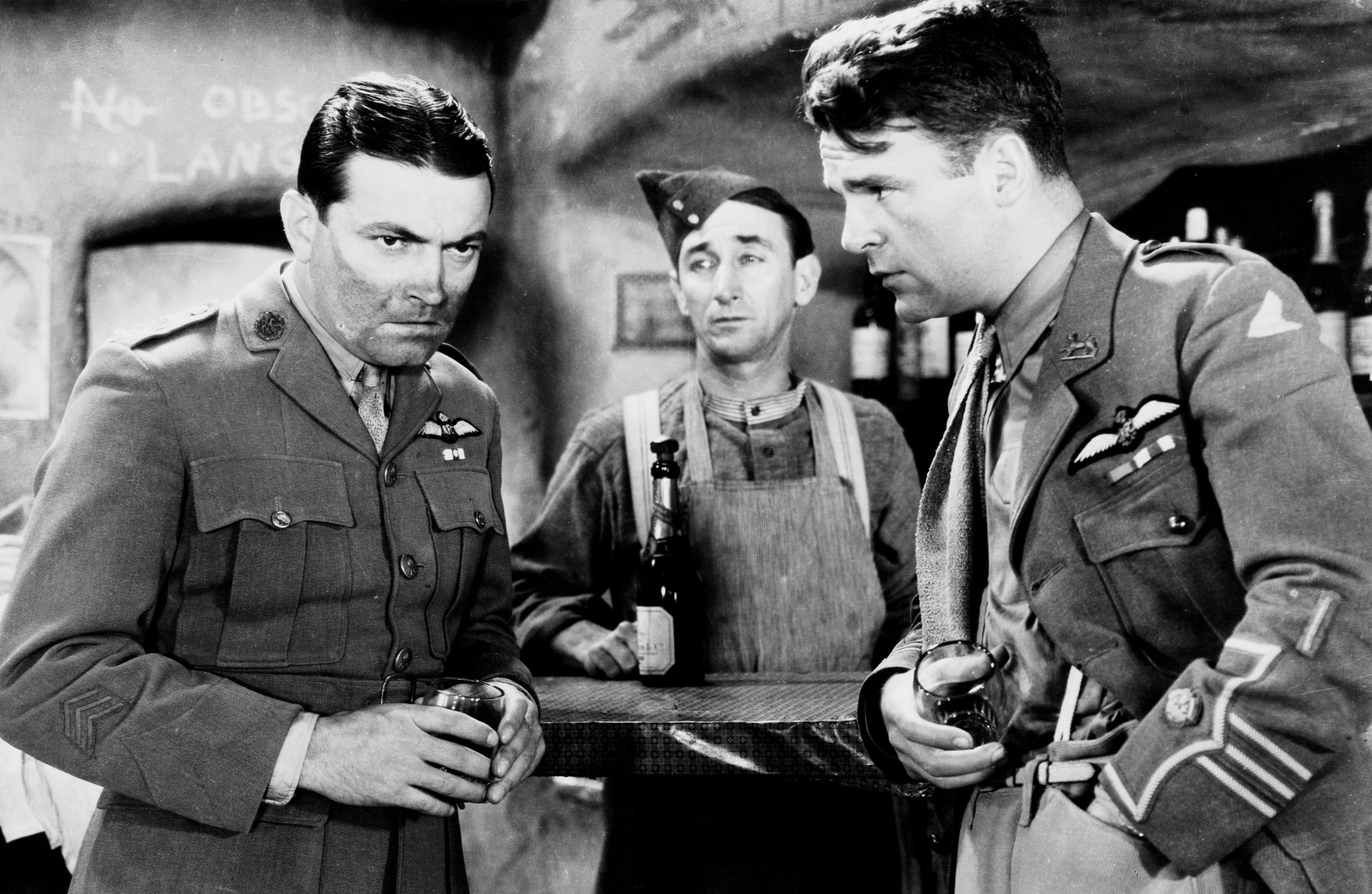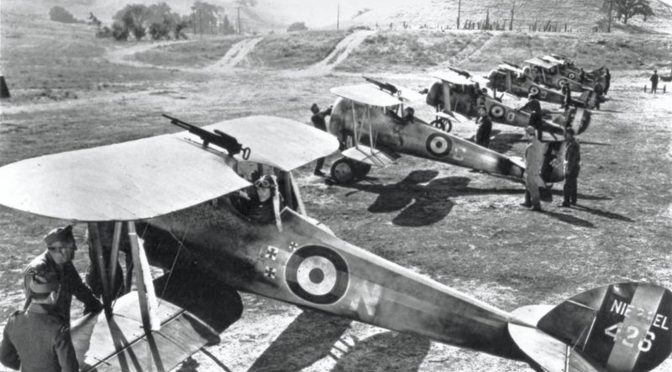What It’s About:
A British pursuit squadron suffers the attrition of air combat in WWI. Major Brand is in command, driven to drink and relentless stress by the young pilots he loses every day to enemy action. His “A Flight” Leader is Captain Courtney, who is a survivor and a skilled veteran pilot whose perspective will be forced to change before the movie is over.

Vintage:
This film was made in 1930. To put that in perspective, The Jazz Singer had been released just three years before. Audiences were no longer content with silent movies, and the Hollywood studios had been scrambling to adopt the new technology. This meant a new equipment needed to be installed in theaters, new recording equipment (capable of synching with cameras) needed to be acquired and used by every film crew, and a whole lot of expensive sound stages needed building on the studio lots.
“Talkies” were still in their infancy, but this one has got a better soundtrack than most.
Even though the entire industry now realized synchronized sound was the wave of the future, it still took a while for film makers to ditch certain practices that were no longer necessary.
Exhibit A: Intertitles. Dawn Patrol doesn’t have as many as a typical silent film–and none for dialog–but it’s got a few. The writers/directors evidently hadn’t figured out a way to give exposition without inserting text in between shots. Or they never even wondered about doing it some other way.
Exhibit B: Subtitles. They put one at the bottom of the frame whenever we see the villain in his cockpit.
Exhibit C: Acting. Some of the actors strike overly-dramatic poses, wear exaggerated expressions, and use jerky, exaggerated gestures. Many of them were veteran actors of the silent era and directors had conditioned them to emote that way. It must have been a tough habit to kick. It kind of grates, now. The film was remade in 1938 and I bet that one doesn’t suffer the same issues.
Exhibit D: Patience. This might not be directly related to silent movies or talkies. This film is just too methodical for the modern audience, in places. Folks back then were more easily entertained (not spoiled rotten with omnipresent entertainment) and had the attention span of a human being–not a gnat or a smartphone zombie.
Plot and Themes:
If you watch a lot of WWII movies, you’ll probably lose count of how many of them are built around certain tropes like individualists learning to do their part as a member of a team. This one thrums on “the loneliness of command” nine years before the invasion of Poland and 20-30 years before the trope became such a cliche` in war movies. For all I know, Dawn Patrol might be what set the precedent for several war movie tropes which are overly familiar today.
The audience is left to assume that the Germans don’t face the same problems as our heroes. The Allies have manpower problems and material shortages, whereas the Germans don’t. In reality, it was almost exactly the opposite.
In fact, this type of story would better represent the German side. The best German aces were given such a workload that they were completely used up by 1917 or so. The constant stress, exhaustion, and requirement to accomplish much with little dulled their abilities and wracked them with sickness. Even the legendary Red Baron could barely keep his eyes open on his last few missions. (His stand-in in this movie is “Von Richter.” What movie about WWI air combat does NOT feature a portrayal of Manfred Von Richtoffen and his Flying Circus, I wonder.)
But, I mean, they’re bloody barbaric Hun savages with no appreciation for the value of human life. So who cares what problems they faced, eh wott?
Production Values:
Howard Hawks directed this. He was a prolific director who made some very memorable films from the silent era right up until 1970. But this (his first talkie) feels like he’s just getting his sea legs.
(As a side note for the red pill and manosphere communities, his serious films depicted very masculine men and feminine women. However, in his comedies, he conformed to the mild gender confusion so popular in the postwar era that helped push our culture onto the slippery slope that led to the institutional gender insanity of today.)
The film probably had a pretty good budget. There are about three aerial combat sequences, including one in the opening scene. Aside from just a couple rear-screen projection shots, this was all real pilots in real planes doing this stuff. Considering that, some of the stunt flying is truly spectacular. I’ve watched my share of dogfight scenes in war movies, and this movie’s are better than most, and still hold up somewhat today.
But even big budgets have their limits. I wonder if that’s why most of the film involves the lonely commander and other personnel at the airfield simply worrying while waiting for the squadron to return, to find out who survived and who didn’t. That’s another popular trope in the genre. No doubt some screenwriters used it because they wanted an intense drama. But, like the stark lighting in Film Noire, budget constraints might have necessitated it in the beginning–so directors took that lemon and made lemonade.
My Take:
Considering everything I’ve mentioned, overall, Dawn Patrol doesn’t hold up that well today. I appreciate the limitations it was made under, and that it was a pioneer film that established precedents for the genre. Few others will. And the crude sound, outdated conventions, hammy acting, etc., are not justified by the story, which seems hackneyed and formulaic despite the fact that it wasn’t back in 1930.
If you have an interest in WWI air combat, you might want to also read my review of The Red Baron.


The over the top acting was typical of the silent era, due to not being able to record vocals. Very few actors were able to pull off realistic performances. Still love it though!
It was a rough transition from silent to talkies for so many of them. They had to change deeply ingrained habits. And for some of them, their voices guaranteed they would fall out of favor–like Buster Keaton and Clara Bow. The movie “Singing in the Rain” has a mild caricature of actresses who had her problem.